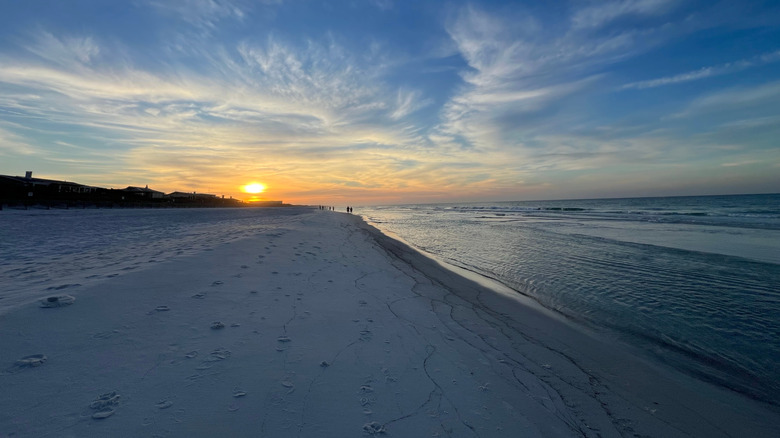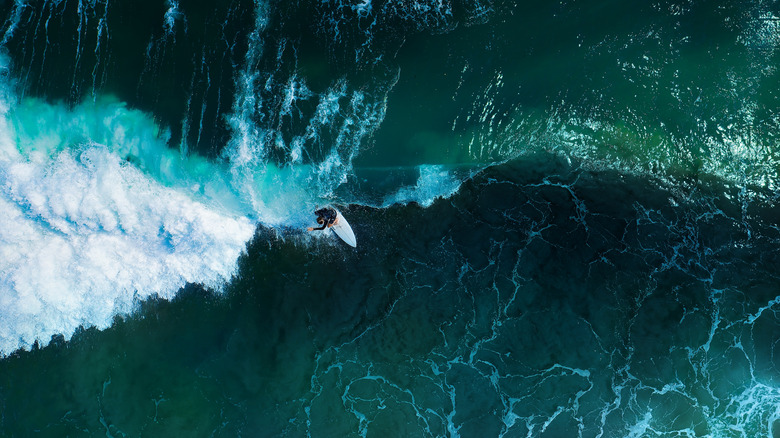Florida's Unassuming Panama City Destination Boasts One Of The Most Dangerous Beaches In America
For whatever reason, Florida seems to have its fair share of dangerous locales. Cities with controversial reputations, like Boynton Beach, have higher-than-average amounts of shoplifting and home break-ins. Jacksonville is extra dangerous for pedestrians because of a lack of sidewalks and an abundance of speeding cars. Siesta Beach, meanwhile, makes the perfect electrical conductor, as folks tend to get struck by lightning while strolling its sand. Well, now we can add one more Florida destination to the mix, one that's lethal for none of the above reasons: Miramar Beach between Panama City and Destin in the Florida panhandle. Rather than crime, traffic accidents, lightning, or something else, Miramar Beach is dangerous because of its waves.
Specifically, Miramar Beach is a hotspot for rip currents. Rip currents can be hard to spot without experience, but you can identify them by breaks in the line of waves rushing towards shore. Water flows out from those gaps rather than in, even on a beautiful, sunny day. It only takes a couple of feet to suck out even the strongest, most experienced swimmer. Hence, the inordinate amount of deaths along the otherwise fluffy, soft, white sands of Miramar Beach.
Raw data from the National Weather Service shows that three people lost their lives this way in the area in 2025, so far — higher than anywhere else in the U.S. One of them was a 10-year-old girl. Back in 2023, there was a slew of 10 deaths along the entire regional strip of beach, the Emerald Coast, in nine days. Numerous sources warn, again and again, to take rip currents seriously, particularly at Miramar Beach. Thankfully, there's one surefire way to stay safe while visiting.
Staying safe amidst Miramar Beach's dangerous waves
The best way to stay safe from Miramar Beach's rip currents is to stay out of the water (especially if there are warnings posted by way of flags or signage). If you've got kids with you, be extra careful not to take their safety or swimming competence for granted. The same goes for adults, as the National Weather Service shows that two of the people claimed by rip currents in 2025 were 54 and 57 — one female, one male, both lost on the same day. On this note, one person on Tripadvisor points to red flags in the water, indicative of a "high hazard" safety rating (as opposed to green and yellow). If you want to head into the ocean and see these flags, don't handwave the situation and assume you'll be alright.
We also mentioned that rip currents are hard to spot. They're easier to see from a higher elevation, where you can survey the waves breaking against the shore. If you spot a gap in the white foam, there might be a rip current there. Sometimes rocks sticking out of the waves, or structures in the water like piers, can cause them to form, too. Then there are other factors out of sight, ones that might explain why Miramar Beach is so prone to rip currents, like the condition of waves below the surface and the shape of the sea floor at the bottom.
In the worst-case scenario, all is not lost if a rip current grabs you. It'll pull you out, not down, which means you can swim parallel to the beach and break through neighboring wave crests. Swim back to shore at an angle and maybe rethink heading back into the ocean from then on.

